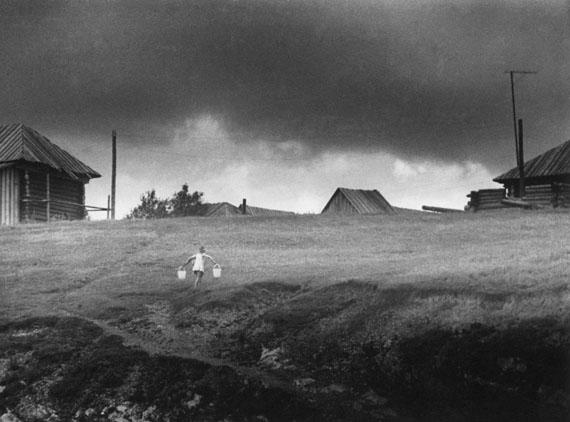
Svetlana Timofeyeva »
Landscapes
Exhibition: 26 Dec 2013 – 9 Feb 2014
ROSPHOTO. State Museum and Exhibition Centre for Photography
ul. Bolshaya Morskaya, 35
191186 Saint-Petersburg
daily 11-19, Thu 11-21

The State Russian Museum and Exhibition Centre ROSPHOTO
ul. Bolshaya Morskaya, 35
191186 Saint-Petersburg
+7-812-3141214
office@rosphoto.org
www.rosphoto.org
daily 11-19, Tue, Thu 11-21

State Museum and Exhibition Centre for Photography ROSPHOTO
Ministry for Culture of the Russian Federation
Svetlana Timofeyeva. Landscapes
26.12 — 09.02.2014
Opening: 25 December 2013 at 18.00
This is the retrospective exposition with joint works from ROSPHOTO's and author's personal collections, the latter was created during the period from 1970 to the 2010.
Svetlana Timofeyeva started photographing in the early seventies. At that time the amateur photo was popular in the USSR, and she at once established herself as amateur artist. For the Soviet amateur photographers the landscape photography was inseparably linked with tourism, backpacking, expedition and such.
Svetlana Timofeyeva's approach is absolutely different. Plunging into the atmosphere of places, getting to know them, the author manages to deliver stories of quiet, ordinary life, human's coexistence with nature through series of photographs. Her photographic geography amazes by its sheer scale: Crimea from the first and surprisingly beautiful Koktebel series to Belomorya in a quite mystical series The Legend of an Invisible City Kitezh, from Primorye and Kamchatka to Karelia, from Baikal Lake to the Carpathian Mountains.
In the works of the first series one can watch the development of the author's vision. Single landscapes do not form a series. Each is valuable by itself, reminding of old, found objects, filled with the foregone life. The effect is created primarily by the use of long-focus lens that carves a piece of space from reality, and the selection of views referring to old, worn-out, lived-through life. The Northern Motif of 1973 captures attention with its feeling of a dead-end space, the suspended time. It seems that the characters would never be able to leave this place and time. In later cycles such as Koktebel (1976-1985) and Ladoga Lake (1985-2012) there would be no more “found objects”, and the people would be rare guests in the image. The reason for this is, probably, the documentary approach being succeeded by a sensuous one. Timofeyeva has become less guided by a certain landscape and less interested in the study of Russia's vast spaces.�

Svetlana Timofeyeva's name first became known in Russian photography in 1971 at the USSR competition and exhibition Of Time and Ourselves in Ulan-Ude where she received the gold medal. This quick success was not accidental and was followed by new works and new awards. Very quickly the works were united in series and eventually the best of them formed cycles. The format of cycle is uneasy, it shows that the author was able to establish connection, in Timofeyeva's case, with a place that she found attractive for a certain period of time. And thus the Russian North cycle has emerged. The work started in 1972 and finished in 1987. The author explains her interest in the North simply and profoundly: “I just fell in love with it!” This emotional phrase describes the very essence of the photographer's attitude toward nature. Timofeyeva's further creations are all infused with this motif.
By the early 1980s, Timofeyeva's works obtain an easily recognizable authorial style. It is first and foremost defined by the deliberately selected and systematically developed theme of landscape. Among the Leningrad artists she became the one who was genuinely interested in the landscape genre as a means of artistic expression.
What is that attracts in Svetlana Timofeyeva's landscapes? It is primarily their atmosphere emphasized by the light not only noticed but brilliantly captured, the light defining the luciferousness of space. The sense of the fragile run of time including the experience of image in the soul of the onlooker. The movement once for all set by the authorial logic of composition — the logic where the interplay of foreground and background leads to the point of light opening the way to the new encounter with landscape, the nature, the eternity.
Timofeyeva's works are notable for their technical quality. The ideally selected views expressing the nature's objective beauty, are re-considered by the author during the printing and additional processing and are brought to subjective perfection. During over forty years of work in landscape genre Svetlana Timofeyeva created hundreds of photographs, but the author considers not over a hundred works as her best. This hundred is gradually extended by new works. With surprising ease, Timofeyeva has crossed the critical point of digital technologies emergence in photography. She is still working, and the love of the photographer, just like in the previous years, is landscape.
Nowadays Svetlana Timofeyeva is a member of the Russian Union of Art Photographers, professor of photography at Saint-Petersburg State University of Culture and Arts, had over 40 personal exhibitions shown in Riga, Vilnius, Kaunas, Kaliningrad, Minsk, Kazan, Perm, Chelyabinsk, Vladivostok, Cheboksary, Yoshkar-Ola, Koktebel, Naberezhniye Chelny, Ulan-Ude, Saint-Petersburg, Moscow. She continues to work fruitfully, photographing the northern part of Ladoga Lake — the places which have once struck her with beauty, and later have become her home where each light patch, each cloud and each gust of wind is the reason to resume the eternal dialogue between humans and nature.�

